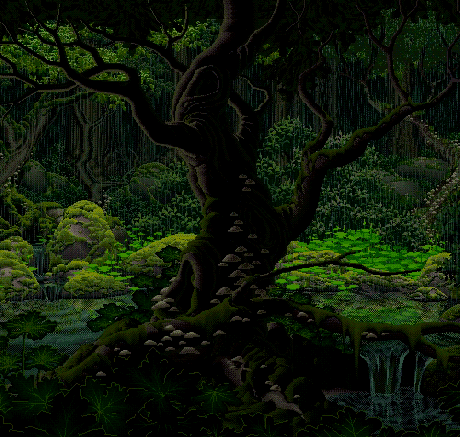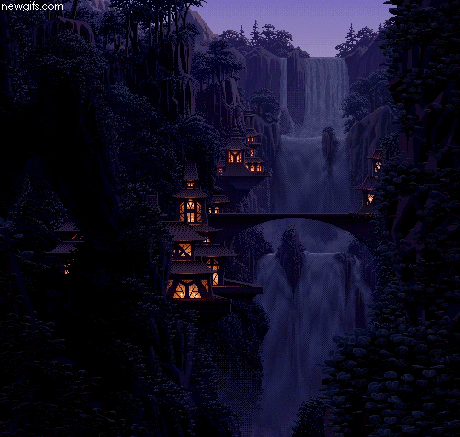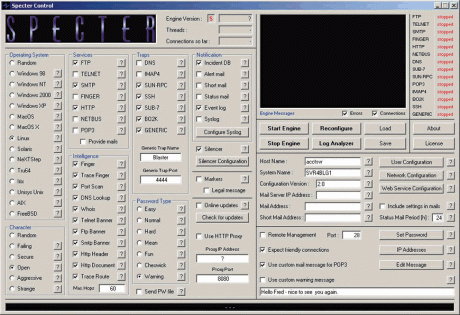(Wordpress site here, and summer classes begin Tuesday so I'll have to decide whether to keep making dual posts. I probably will while the site is live for students just so I can see how it works out)
This post will tax some of your machines, but it's worth it - I promise. In searching for the coding behind Atari's well-known color-cycling routine, I discovered a fascinating webpage that uses the HTML5 specification (a version of the language in which web pages are created) and a more technical but plain-text standard known as JSON to animate a series of old pixel-art images with color cycling.
 To give you the basic idea, color cycling allows for the shifting of an image's palette of colors, with each pixel cycling through the colors that are nearest to it in the palette, giving the illusion of motion. It might not sound like much, but the results are spectacular. Unlike traditional animation, the image itself is not actually changed in any way; it remains a single image, only the pixels are cycling through different colors - the images in this post are animated gifs, however on the linked webpage you'll see the same images with many others but they are not animated, their movement is an illusion created by shifting colors! The site gives a very good example of it being similar to how movie marquee lights give the impression of movement, when they are simply turning off and on at very specific intervals.
To give you the basic idea, color cycling allows for the shifting of an image's palette of colors, with each pixel cycling through the colors that are nearest to it in the palette, giving the illusion of motion. It might not sound like much, but the results are spectacular. Unlike traditional animation, the image itself is not actually changed in any way; it remains a single image, only the pixels are cycling through different colors - the images in this post are animated gifs, however on the linked webpage you'll see the same images with many others but they are not animated, their movement is an illusion created by shifting colors! The site gives a very good example of it being similar to how movie marquee lights give the impression of movement, when they are simply turning off and on at very specific intervals.
When you visit the site, you can launch the images with sound or without, and you can alter some parameters such as zoom and cycle speed, as well as see the actual palette cycling through the colors; it's spectacular and the pictures are stunning. I have linked to the main website of the person who developed the animations, but it appears they are based off of Amiga files from years ago (although it states they were created in DOS with DeluxePaint. I had an Amiga, so maybe I'm getting platform and format mixed up) originally created by Mark J. Ferrari. If you're familiar with the old LucasFilm games such as Loom which was mentioned in the Q&A with Mark, or similar games like Indiana Jones and the Fate of Atlantis or The Secret of Monkey Island, Mark did work for Lucasfilm Games in their heyday when those titles were popular.
(Incidentally, if you're interested there is a version of The Secret of Monkey Island and its sequel in the iTunes app store, that allows you to swipe to shift between the original pixel-art and brand new watercolor-quality graphics. One of the best apps I've ever seen).









.jpg)

























